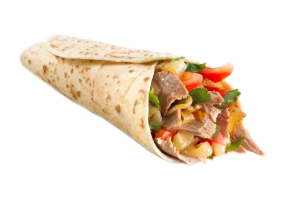Why is Turkey famous for food? What is traditional Turkish food?
Turkey famous for food

Turkey famous for food:
Turkey has a rich culinary tradition that spans centuries and combines influences from the Middle East, Central Asia, the Mediterranean, and the Balkans. As a result, the country is well known for its cuisine. Turkey is known for its cuisine in part due to the following factors:
- Diverse Cuisine: Turkey’s diversified cuisine differs from area to region as a result of its geographical location at the intersection of Europe and Asia. Based on regional ingredients and cultural influences, each area provides distinctive flavors and cuisine.
- Historical and Cultural Influences: Ottoman, Persian, Arab, Greek, and Armenian historical and cultural elements, as well as others, have all influenced Turkish cuisine. Due to the blending of these civilizations, there is now a huge variety of tastes and cooking methods.
- Use of Fresh and Local Ingredients: In Turkish cooking, local, fresh, and seasonal ingredients are highly valued. Foods must have fruits, vegetables, grains, meats, and seafood in order to be tasty and nourishing.
- Spices and Herbs: Turkish food is well known for using a variety of herbs and spices, such as cumin, coriander, sumac, mint, parsley, and dill. The recipes get richer and deeper thanks to these spices.
- Kebabs and Grilled Meats: Turkish cuisine is renowned for its flavorful kebabs and grilled meats, which are made from a variety of meats, including lamb, cattle, chicken, and fish. Kebabs are expertly grilled after being marinated in fragrant seasonings.
- Baklava and Turkish Sweets: Turkish pastries are well known worldwide, particularly baklava. Baklava is a dessert comprised of layers of thin filo dough that has been filled with nuts and sweetened with honey or syrup.
- Breads and Pastries: There are many different types of bread available in Turkish cuisine, including flatbreads like pide and lavash. Another well-liked pastry is börek, which is made of flaky dough and is filled with cheese, meat, or vegetables.
- Mezes and Appetizers: Mezes are a range of tiny meals or appetizers that can be cooked using grains, dairy, fish, or vegetables. They are an essential component of Turkish cuisine, enabling a social and communal dining experience.
- Tea and Turkish Coffee: Turkish culture’s two most iconic drinks are Turkish tea (cay) and Turkish coffee. Turkish coffee is a thick and strong coffee frequently eaten with sweet pastries, while Turkish tea is a strong black tea served in tiny tulip-shaped cups.
- Hospitality and Cultural Significance: Turkish hospitality is essential to understanding Turkish cuisine. It’s a strongly entrenched custom to have meals with friends and family, and inviting strangers to join you for a meal is a sign of friendliness and hospitality.
Turkey’s food is known the world over for being flavorful and diversified because of its culinary diversity, mixing of flavors, and reliance on fresh ingredients.

What is traditional Turkish food?
Turkish cuisine has been impacted by millennia of history and a special fusion of cultural exchanges to create a complex and varied tapestry of tastes, textures, and cuisines. Popular traditional Turkish dishes include the following:
- Kebabs:
- Döner Kebab: a flatbread that is commonly served with layers of seasoned meat (usually lamb, beef, or chicken) that have been roasted on a vertical rotisserie.
- Adana Kebab: Flatbread is served with spiced ground meat, frequently lamb, that has been roasted on skewers.
- Mezes (Appetizers):
- Hummus: a spread prepared with cooked, mashed chickpeas or other beans and tahini, along with salt, garlic, lemon juice, and olive oil.
- Baba Ganoush (Patlıcan Salatası): a dip made from roasted eggplant, olive oil, garlic, and different spices.
- Dolma: filled grape leaves made of rice, pine nuts, and spices.
- Börek:
- Su Böreği: An egg, milk, and oil-soaked dough type used to make thin layers of borek that are frequently stuffed with cheese or minced meat.
- Kıymalı Börek: Börek stuffed with pork mince, onions, and seasonings.
- Pide:
- Lahmacun: a thin piece of bread cooked in a wood-fired oven with minced meat (often lamb or beef) and spices on top.
- Kuşbaşı Pide: Meat pieces on top of pide, frequently served with cheese and veggies.

- Kısır:
- a meal like tabbouleh prepared with fine bulgur, finely chopped veggies, fresh herbs, tomato paste, and spices.
- Lentil Soup (Mercimek Çorbası):
- a well-liked hot soup composed with red lentils, onions, carrots, and spices.
- Koftes:
- İçli Köfte: oval-shaped patties made of bulgur and ground beef are frequently stuffed with a combination of spices, onions, and ground meat.
- Çiğ Köfte: a dish made of bulgur or ground raw beef that has been mixed with seasonings and served with lettuce leaves.
- Desserts:
- Baklava: Filo dough is used to make layers of sweet pastry that are filled with almonds and sweetened with syrup or honey.
- Sütlaç: cinnamon-flavored creamy rice pudding that’s frequently topped with almonds.
- Turkish Delight (Lokum):
- a chewy, sweet treat consisting of flour and sugar that is frequently flavored with different fruits and nuts.
- Turkish Tea and Coffee:
- Turkish Tea (Çay): a potent black tea that is generally sweetened to taste and served in tiny tulip-shaped cups.
- Turkish Coffee: Traditionally made in a cezve, this robust coffee is thick and powerful. It is frequently served with water.
- Menemen:
- a common egg topping for a typical Turkish breakfast meal composed with sautéed veggies like peppers, tomatoes, and onions.
- Pilaf (Pilav):
- Pilav: a typical cuisine that consists of rice cooked with a variety of ingredients, such vegetables, meat, or legumes, and is frequently spiced.

These are just a handful of the numerous traditional Turkish dishes that make up Turkey’s rich culinary heritage.




